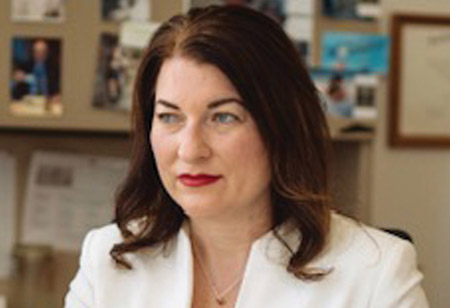Thank you for Subscribing to Healthcare Business Review Weekly Brief

How Local Public Health is Mitigating the Spread of COVID-19
Healthcare Business Review
Prevent, promote, protect as the public health shield says. This is our creed. It is also our charge for those who live, work, play, and worship in the City of Worcester (population 187,000) and the six surrounding communities we provide public health services to (additional population of 100,000) in the Central MA Regional Public Health Alliance.
Local public health is often invisible, but that’s how we know we are doing our jobs. Unlike police departments that put up yellow caution tape around a crime scene or a red fire truck that puts out a fire, public health does its work quietly and without fanfare. Often underfunded and misunderstood, public health is responsible for much more than ensuring the food and water we drink is safe and that we live in safe and sanitary conditions. In Massachusetts, local health departments and boards of health are legally responsible to provide food protection, ensure adequate and safe housing, and communicable disease investigation to their residents. Much of our work is about education and compliance, not punishment. Over the past 10 years, our responsibilities have grown exponentially to include an authentic assessment of the community’s health using qualitative and quantitative data and evidenced-based approaches to achieving positive health outcomes. Priority areas of focus now include the opioid epidemic, transportation, access to healthy food, access to health care, economic opportunity, mental health, health equity, and racism and discrimination. The truth of the matter is that public health touches everything these days.
We are also air traffic control for COVID-19. We are behind the scenes orchestrating a complex response to a pandemic with partners from all sectors of the government at the local, state, and federal levels. In March, I reassigned my team of 24 full-time employees to work exclusively on coronavirus. We had staff embedded at the Emergency Operations Center (EOC) as part of an inter-disciplinary incident command structure to navigate immediate and forecasted needs. Due to the surge in COVID-19 cases, public health assisted with standing up 4 homeless shelters to depopulate the small designated City facility. This required volunteers, food, linens, PPE, supplies, and access to services. We also supported opening a field hospital at the DCU Center, an entertainment and convention venue, when our local hospitals became overwhelmed with patients in the ICU. Environmental health staff spent hours each week on calls with the state department of public health and other entities receiving and synthesizing guidance that was coming out daily. The team continues to answer thousands of phone calls and emails from frightened residents and confused business owners about the Governor’s phases of reopening. Complaints about lack of social distancing and masks continue to flow into the office each day. The Chief of Community Health became our contact tracing coordinator, securing medical volunteers to augment our lean public health nursing team.
Public health is responsible for much more than ensuring the food and water we drink is safe and that we live in safe and sanitary conditions
Each day, our epidemiologist pulls the new positive cases from MAVEN, our statewide database that monitors communicable diseases. The data is then shared with the nurses who determine which cases they will contact, which ones will be shared with our trained volunteers, and which cases will be sent to the state’s Contact Tracing Collaborative (CTC). At any one time, 25 individuals are calling positive cases. Addresses are verified and then shared with dispatch (an order from the state) to add to a positive address list to ensure additional PPE is worn for any emergency calls. In addition to dozens of calls being made, a matrix of questions is asked to determine any close contacts, who are also contacted. Depending on the outcome, they may need to be in isolation or quarantine. The purpose of this is to mitigate the transmission of the virus, but also understand any commonalities to determine a source. Contact tracing is the single most effective tool public health has to stop the spread of COVID-19. This practice has been in place for decades and is still being used during the pandemic. Isolating the source of an outbreak assists public health, as well as local and state officials, with adjusting education, messaging, and testing resources.
As contact tracing continues, public health now faces a twindemic; the flu and COVID-19. A push is on to encourage flu vaccinations, especially for those in high-risk categories. A recent mandate by the state department of public health requires all school-aged children to receive a flu shot. At the same time, we are focusing on reviewing and drilling our emergency dispensing site plans (EDS). Post 9/11, local public health began planning for large scale disasters and response, including pandemics. In order to mass vaccinate an entire population within a 24-48 hour period, careful and thoughtful plans have been developed. They include pre-identified facilities that were selected based upon ease of accessibility and flow. However, drive-thrus and other special accommodations may be deployed to ensure those with limited access to transportation can receive a vaccination. In particular, intensive outreach will be conducted to communities of color that are disproportionately impacted by COVID-19. These plans will require cooperation for various departments and hundreds of volunteers.
Public health continues to mitigate the spread of COVID-19 through education, contact tracing, and vaccinations.









